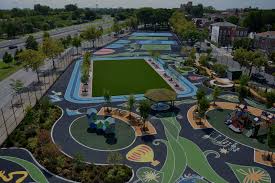Stamp: Buildings in Berlin (Berlin 1949)
Buildings in Berlin (Berlin 1949)
07 May (Berlin ) within release Berlin buildings goes into circulation Stamp Buildings in Berlin face value 10 German pfennig
| Stamp Buildings in Berlin in catalogues | |
|---|---|
| Michel: | Mi:DE-BE 47II |
Stamp is horizontal format.
Role printing; width 22.7 mm Adjacent to the '0' sharp green lines, also left at the 'P' The front edge of the middle patch is clear and fine. The edge of the patch and the patch hatch are separated. The hatch line is left clearly separated from the Colonnade. The lowest heaven hatch at the '10' consist of 6 continuous dots. The hatch of the foreground ends with a dot above the 'P' of 'POST'. Steep 'S' in 'KLEISTPARK'.Also in the issue Berlin buildings:
- Stamp - Schöneberg Town Hall face value 4;
- Stamp - Tegel Castle face value 5;
- Stamp - Reichstag building face value 6;
- Stamp - Schöneberg Town Hall face value 8;
- Stamp - Colonnade at the Kleistpark, Schöneberg face value 10;
- Stamp - Buildings in Berlin face value 10;
- Stamp - Tegel Castle face value 25;
- Stamp - Schöneberg Town Hall face value 40;
- Stamp - National Gallery face value 60;
- Stamp - Technical College face value 80;
- Stamp - Technical College face value 90;
- Stamp - Schöneberg Town Hall face value 4;
- Stamp - Tegel Castle face value 5;
- Stamp - Tegel Castle face value 5;
- Stamp - Technical College face value 90;
- Stamp - Technical College face value 90;
- Stamp - Schöneberg Town Hall face value 8;
- Stamp - Schöneberg Town Hall face value 40;
- Stamp - Schöneberg Town Hall face value 4;
- Stamp - Colonnade at the Kleistpark, Schöneberg face value 10;
- Stamp - Colonnade at the Kleistpark, Schöneberg face value 10;
- Stamp - Colonnade at the Kleistpark, Schöneberg face value 10;
- Stamp - Schöneberg Town Hall face value 4;
- Stamp - Schöneberg Town Hall face value 4;
- Stamp - Technical College face value 90;
- Stamp - Tegel Castle face value 5;
- Stamp - Tegel Castle face value 25;
- Stamp - Tegel Castle face value 25;
Stamp Buildings in Berlin it reflects the thematic directions:
A park is an area of natural, semi-natural or planted space set aside for human enjoyment and recreation or for the protection of wildlife or natural habitats. Urban parks are green spaces set aside for recreation inside towns and cities. National parks and country parks are green spaces used for recreation in the countryside. State parks and provincial parks are administered by sub-national government states and agencies. Parks may consist of grassy areas, rocks, soil and trees, but may also contain buildings and other artifacts such as monuments, fountains or playground structures. Many parks have fields for playing sports such as baseball and football, and paved areas for games such as basketball. Many parks have trails for walking, biking and other activities. Some parks are built adjacent to bodies of water or watercourses and may comprise a beach or boat dock area. Urban parks often have benches for sitting and may contain picnic tables and barbecue grills.
A building or edifice is a structure with a roof and walls standing more or less permanently in one place, such as a house or factory. Buildings come in a variety of sizes, shapes and functions, and have been adapted throughout history for a wide number of factors, from building materials available, to weather conditions, to land prices, ground conditions, specific uses and aesthetic reasons. Buildings serve several needs of society – primarily as shelter from weather, security, living space, privacy, to store belongings, and to comfortably live and work. A building as a shelter represents a physical division of the human habitat (a place of comfort and safety) and the outside (a place that at times may be harsh and harmful).


